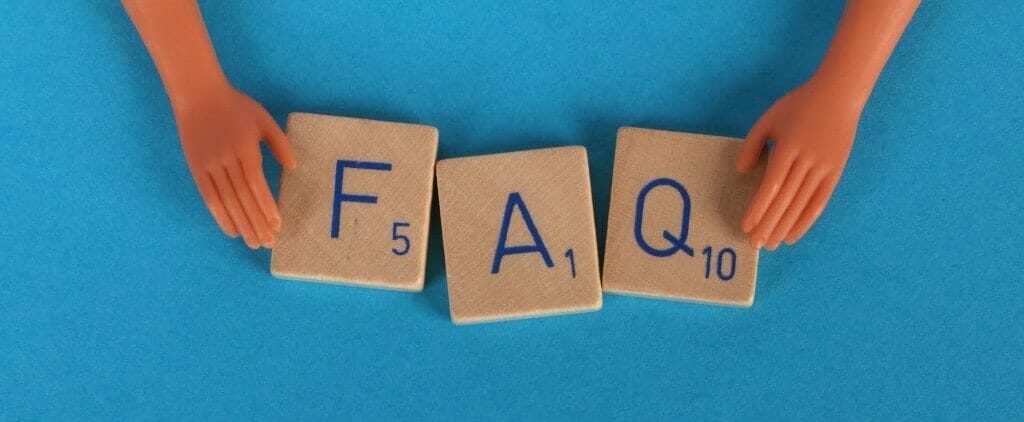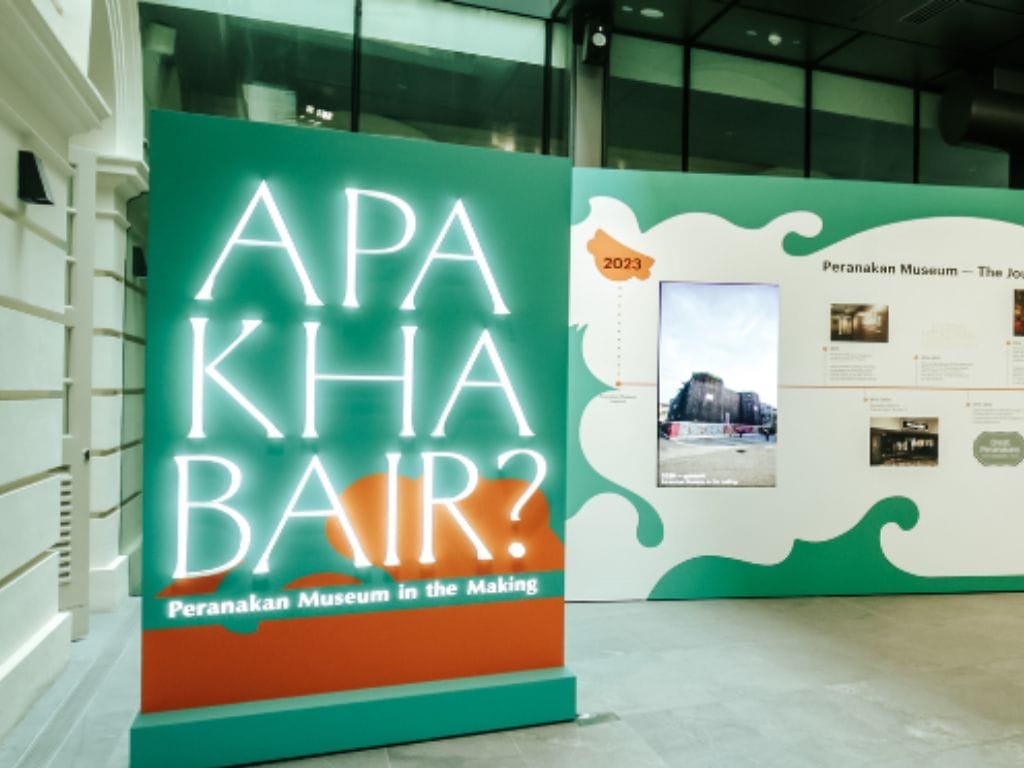‘Apa Khabair’ by the Peranakan Museum: Continuing the Conversation

Table of Contents
No Time to Read? Here’s a Snappy Summary of This Article
- Vibrant Fusion: “Apa Khabair” explores the dynamic blend of Peranakan culture, weaving together tradition and modern influences in a captivating conversation.
- Culinary Odyssey: Delve into the rich tapestry of Peranakan cuisine, a tantalizing journey that mirrors the cultural fusion within “Apa Khabair.”
- Nostalgic Melodies: Experience the harmonious sounds of Peranakan music, as “Apa Khabair” resonates with traditional tunes while embracing contemporary rhythms.
- Artistic Mosaic: Uncover the visual feast within the ACM’s exhibit, where Peranakan artistry intertwines with innovation, reflecting a captivating narrative.
- Living Heritage: “Apa Khabair” breathes life into Peranakan heritage, fostering a dialogue that transcends time, preserving and celebrating this unique cultural legacy.
The Asian Civilisations Museum (ACM) unveiled ‘Apa Khabair’. It’s eponymous of the familiar, endearing Baba Malay greeting, which means ‘What news is there?’
The museum was initially scheduled to be re-opened around this period, but the pandemic had previously stalled the refurbishment. But before it re-opens, the ACM is keen on trying something new for the Peranakan Museum.
‘It’s going to be familiar yet different. It’s going to be experimental,’ said Kennie Ting, Director of ACM and the Peranakan Museum. The Peranakan Museum will align its curatorial direction with ACM. As it re-opens, the Peranakan Museum will curate themes that explore the port cities in Southeast Asia. It will place the Peranakan in the larger context of the Nusantara, delving into the roots and the different linkages between different Peranakan cultures.
‘The old (Peranakan) museum was more ethnographic-centric. In the new museum, we’ll let the objects be the focus. We’ll explore the stories behind the aesthetics and craftsmanship, rather than just its function,’ said Kennie.
Kennie also hopes to have more community voices in the new museum, reflecting the cultural diversity of the Peranakan culture. The Peranakan Museum will then showcase how different people continue, and innovate, the culture. Kennie also hopes the re-opening will not only anchor and deepen roots but inspire innovation. In the future, the museum may open contemporary commissions when the Peranakan Museum re-opens.

Crossing the Divides
The centerpiece of Apa Kabair is a carriage, which serves as an example of how the Peranakan culture assimilates different ideas onto its own.
It was most likely used in Central Java, in a traditional ceremony called Tedun, when a child picks an object that symbolically represents their future interests. While its shape is reminiscent of European horse-drawn carriages, the gilded, lacquered carvings are inspired by Javanese and Chinese motifs.
There are other samplings of intricate artifacts, such as the Sireh set: a wooden box with intricate silver carvings dotted with mother-of-pearls. Intricate carvings coloured across the receptacles and the cutter too.
Another highlight is all the porcelain kitchenware, and plates hailing from 1870s China. Kennie explained that it depicted how the Peranakan sensibilities shifted as the styles of that period moved away from the Qing aesthetics.
Connecting The Future to the Past
The Apa Khabair exhibition serves as a glimpse of what the Peranakan Museum has in mind for its future. The Peranakan Museum turns to food to connect the present with the past. A section of Apa Khabair will have QR codes that will lead to recipes of Peranakan cuisine. The museum will be collecting recipes to add to their collection too.
There is also ‘I Say You Do’, a video series about how the current generation learns about the Peranakan tradition only through verbal instructions. As the different maestros of Peranakan culture give instructions, the video series is a more playful take on oral traditions while reinforcing its powers. After all, recipes and other cultural practices are passed down through word of mouth.
Continuing the Conversation with the Peranakan Museum
Apa Khabair is a look at how the Peranakan Museum is evolving as it reopens, while still committing to working with the diverse Peranakan communities. In preparing for its reopening, they banked on the strong ties they forged when they first opened. They continued working with the Baba Nyonya Chinese Peranakan community and the Peranakan Association of Singapore. However the museum is looking to explore and showcase other new communities as well, starting with the Arab Peranakan and Indian Peranakan communities.
‘It’s really interesting as well to start a new relationship. I think it’s also eye-opening to immediately grasp that (the spirit of) Peranakan applies to us as well. Because we’ve adapted, and we’ve acculturated to this. We share a lot of the same sort of material culture with them as well’ said Noorashikin Zulkifli, Senior Curator at the ACM. ‘It’s really (about) having conversations, finding out what’s important for them and what we can represent in the museum.’
Beyond that, the Peranakan Museum will continue to have programs to engage with the public. There’ll be talks, lectures, and tours of the new galleries. But for Noorashikin, a key component lies in the workshops and demonstrations, as it might appeal more to the youth.’ I think workshops and demonstrations are more engaging. And rather than having a talk or a lecture,’ she said.
Read Also:
Top Best 18 Peranakan Restaurants in Singapore
With that, the public takes part in the culture. There’s something to be said about trying to do something,’ she said. ‘I tried to do batik, and I realized so much skill is involved. You finally realize that you know you need to learn and be good at it and be creative about it. That it might spark them to continue learning about this.’
And so the Peranakan Museum hopes to continue working with their community partners, as well as the youth communities within those community partners. They will also continue to complement the Peranakan community in Singapore, along with the other initiatives on the landscape, such as BabaMalay.com, and the Baba House.

Various Peranakan performing arts groups are also maintaining and continuing Peranakan culture. Noorashikin shared about the Gunong Sayang Association, one of the oldest Peranakan cultural organizations in Singapore. Established in 1910, the association continues to put on plays and other performances.
When asked about her biggest hope for the re-opening of the Peranakan Museum, Noorashikin answered ‘I hope that everybody comes! So everyone can connect with Peranakan culture. And that goes for people beyond the Peranakan communities, so they can relate to the culture and take away what they can.’
‘Apa Khabair’ Exhibition Details
Apa Khabair? – Peranakan Museum in the Making will run from 25 February 2022 to 29 May 2022 at the Asian Civilisations Museum.
Entry is free for Singaporeans and Permanent Residents.
For more information, please visit www.acm.org.sg | @acm_sg | https://www.facebook.com/asiancivilisationsmuseum
Correction: The title was changed from ”Apa Khabair’ by the Peranakan Museum’ to ”Apa Khabair’ by the ACM.’ The previous title of the article seemed to suggest that the exhibition is presented by the Peranakan Museum when it is presented by ACM at its Contemporary Gallery. The Peranakan Museum is also currently closed for renovations. So the title is changed to prevent readers from mistakenly heading down to the actual Peranakan Museum at Armenian Street for this show.
Conclusion
Tropika Club Magazine believes that “Apa Khabair” isn’t just an exhibit; it’s a vibrant conversation starter that celebrates the evolving identity of Peranakan culture. Dive into the past, groove to the present, and join the dialogue shaping the future – because cultural heritage isn’t just history, it’s a living, breathing experience. As we explore the intricate layers of Peranakan heritage, we’re reminded that traditions aren’t stagnant; they’re a dynamic force, adapting, influencing, and enriching our lives in unexpected ways. So, let’s keep the conversation alive, weaving the threads of our cultural tapestry together, and celebrating the timeless beauty of Peranakan heritage.

Frequently Asked Questions (FAQ)
Q: Where can I experience ‘Apa Khabair’ by the ACM in Singapore?
A: Head to the Asian Civilisations Museum (ACM) in Singapore to immerse yourself in the vibrant world of ‘Apa Khabair.’
Q: Are there any interactive elements in the ‘Apa Khabair’ exhibit?
A: Absolutely! Engage in lively discussions and be part of the conversation surrounding the evolving identity of Peranakan culture at ACM.
Q: What makes Peranakan cuisine unique, as mentioned in the blog post?
A: Peranakan cuisine is a flavorful fusion of traditional Southeast Asian and Chinese influences, creating a unique and spicy culinary experience.
Q: Can you recommend other exhibits at ACM related to Peranakan culture?
A: Explore the ACM’s diverse exhibits, including ‘Apa Khabair,’ and don’t miss out on other showcases highlighting the rich heritage of Peranakan culture.
Q: How does ‘Apa Khabair’ contribute to preserving Peranakan heritage?
A: ‘Apa Khabair’ serves as a dynamic platform fostering dialogue and understanding, actively contributing to the preservation and celebration of Peranakan heritage.

Have an Article to Suggest?
Tropika Club is always looking for new and exciting content to feature in their magazine and they value the input of our readers. If you have any noteworthy content or articles that you believe would be a great addition to Tropika Club’s magazine, we are open to suggestions and encourage you to reach out to us via email at [email protected]. By doing so, Tropika Club values your expertise and knowledge in the matter and appreciates your willingness to help. We will review your recommendations and update our list accordingly
Meanwhile, Check Out Tropika Club’s Ecosystem of Websites
Tropika Club Magazine – Tropika Club Magazine is a Singapore-based publication that features articles on a wide range of topics with a focus on local businesses and content for the region. The magazine emphasizes supporting local businesses through its #SupportLocal initiative, which includes coverage of everything from neighborhood hawker stalls to aesthetic clinics in town. In addition to highlighting local businesses, Tropika Club Magazine also covers a variety of local content, including beauty, lifestyle, places, eats, and what’s on in Singapore and the Asia Pacific region.




